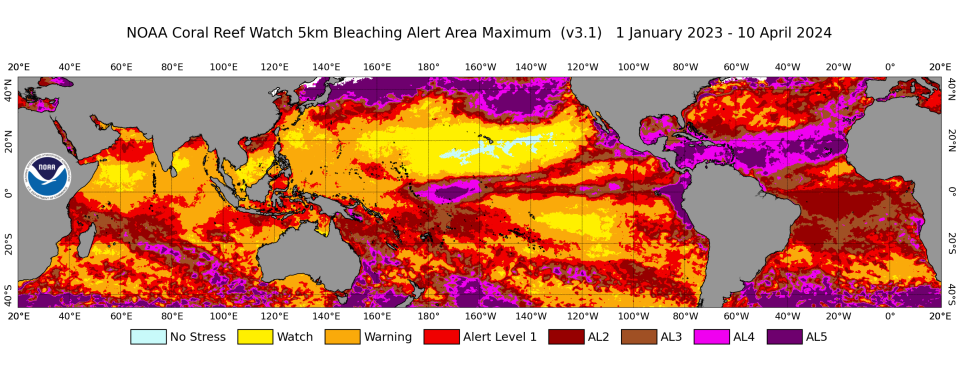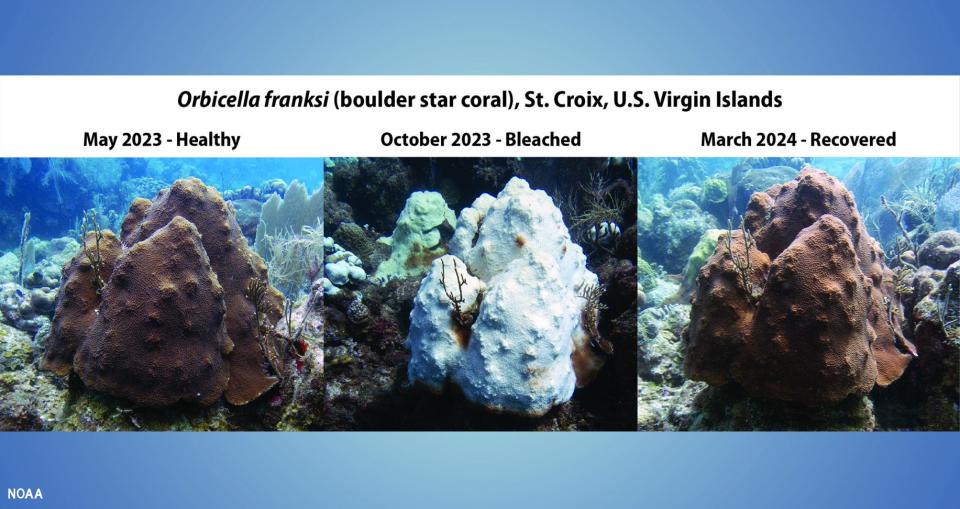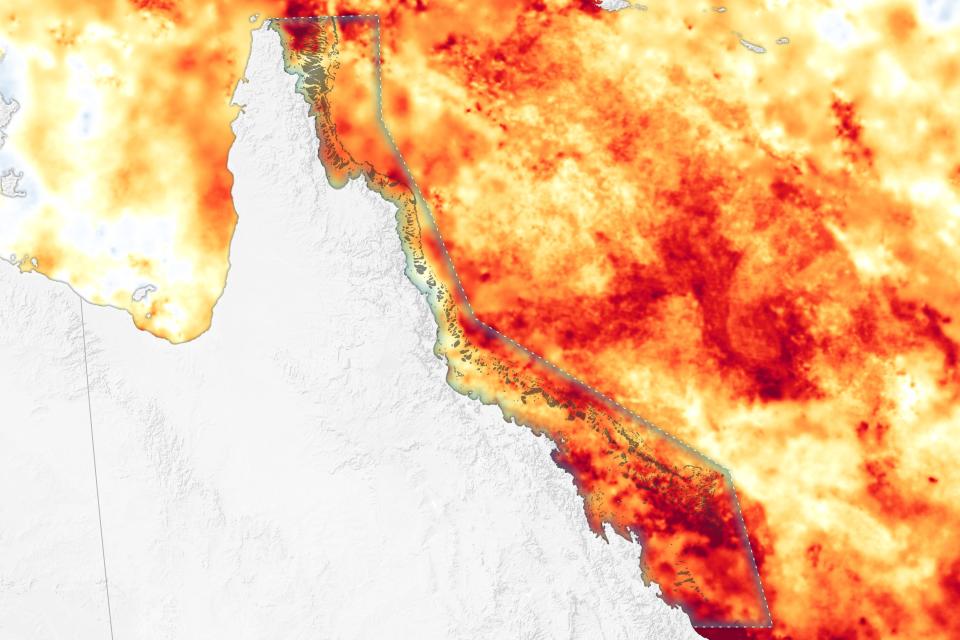Scientists warned about warm oceans devastating coral. It's happening at a massive scale.
Massive coral bleaching across the world's oceans during the past year's extremely warm water temperatures was labeled a “global coral bleaching event” by federal officials on Monday.
It’s the fourth global coral bleaching overall and the second in the last 10 years, with extensive bleaching and heat stress across the Atlantic, Pacific and Indian oceans, the National Oceanic and Atmospheric Administration said.
"From February 2023 to April 2024, significant coral bleaching has been documented in both the Northern and Southern Hemispheres of each major ocean basin," said Derek Manzello, coordinator of NOAA’s Coral Reef Watch. Reef Watch monitors heat stress based on sea surface temperatures measured by satellite.
Coral scientists around the world say bleaching is growing worse and becoming more frequent as climate change sends temperatures higher in the world’s oceans. They’ve watched the current bleaching event unfold over the past year, from Florida and the Great Barrier Reef to remote islands in the middle of the Pacific Ocean.

The news comes on the heels of announcements last week that last month was the Earth's warmest March ever recorded. It was the 10th month in a row of temperatures warmer than previous records, said the European Union’s Copernicus Climate Service.
"Thermal stress on coral reefs is off the charts” in the northern and southern hemispheres, coral scientist Terry Hughes posted on X Monday morning. It’s the fourth global mass coral mortality event since 1998, due to escalating human-caused heating, said Hughes, a professor at James Cook University in Australia.
“No one should be surprised,” Hughes posted. He linked to a paper he and 23 other co-authors published in the journal Science in 2018 saying the average interval between bleaching events is less than half of what it was before. The increasing frequency of ocean warming and coral bleaching events isn’t allowing corals to recover in between events, the study found.
Greenhouse gases rocketing upward Highest in at least 800,000 years
Model predictions have suggested “for years that bleaching impacts would increase in frequency and magnitude as the ocean warms,” said Jennifer Koss, director of NOAA’s Coral Reef Conservation Program.
What causes coral bleaching?
Dozens of algae types live inside the world’s corals, sharing a relationship that gives the corals color, nutrition and changes in surrounding water that help build the limestone skeletons corals are known for.
But the algae begin to die when water temperatures get warmer than average and stay there for 10 days or more. Toxins disrupt the algae’s photosynthesis process, causing the coral to eject the algae, which leads to bleaching and die offs. A bleaching event doesn't mean all the coral will die, but scientists say it's difficult for the coral to recover when such events occur more often.

Coral reefs bring benefits to communities through tourism, food security and biodiversity. A study last year reported that one of every three species in the world’s oceans live among coral reefs, including nearly as many microscopic organisms as all of those previously identified around the globe.
What is coral bleaching? Here's how an unprecedented ocean heat wave causes changes below
Where is coral bleaching occurring?
Bleaching events started last spring in Florida and the Caribbean and have continued, prompting emergency rescues in experimental coral reefs and giving extra urgency to a variety of research projects designed to help coral reefs become more resilient to rising temperatures.
The heatwave in Florida waters was “unprecedented” – starting earlier, lasting longer and more severe than any previous event in the region, NOAA stated.
Since then, bleaching also has been reported in Brazil, the eastern tropical Pacific, including Mexico and Costa Rica, Australia’s Great Barrier Reef and islands in the South Pacific, including Fiji, Kiribati and French Polynesia, NOAA said. Corals also are experiencing die offs in the Indian Ocean basin, including in the Red Sea, Persian Gulf, Tanzania, Seychelles and western coast of Indonesia.
Heat stress was so extreme in the oceans in December that NOAA introduced new levels for its bleaching alerts. The alerts, which used to include only levels one and two, now number up to five, based on the severity of heat stress in ocean temperatures.

NOAA is working with agencies and groups to fund research to develop and explore potential solutions to offset the negative impacts of climate change and help coral reefs.
Dinah Voyles Pulver covers climate and the environment for USA TODAY. Reach her at [email protected] or @dinahvp.
This article originally appeared on USA TODAY: Global warming is having devastating effects on coral, NOAA declares
